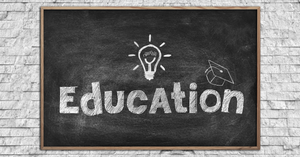Education should be a universal right, but for millions of neurodiverse learners—students with autism, ADHD, dyslexia, and other learning differences—traditional classrooms have often been inaccessible. The “one-size-fits-all” model rarely worked. In 2025, however, the story is changing. Global digital tools and inclusive technologies are reshaping how neurodiverse students learn, ensuring they’re not just included, but empowered.
Understanding the Challenge
Neurodiverse students face unique hurdles in education:
- Rigid teaching methods that don’t accommodate varied learning styles.
- Limited resources in schools, especially in rural and underserved regions.
- Stigma and misunderstanding, where learning differences are mistaken for lack of ability.
The result? Talented learners are often left behind, their potential untapped.
How Global Tools Are Making a Difference
1. AI-Powered Learning Assistants
AI tools can now adjust reading levels, simplify complex text, or provide step-by-step guidance. For example:
- A student with dyslexia can use text-to-speech tools to listen instead of struggling with reading.
- An ADHD learner can receive structured study schedules and reminders tailored to their focus patterns.
2. Immersive Learning Environments
Virtual reality (VR) and gamified platforms transform lessons into interactive experiences. Neurodiverse students often thrive in visual and experiential learning, where abstract ideas become tangible.
3. Universal Design for Learning (UDL) Platforms
Many global edtech companies now design platforms with built-in options: captioning, color adjustments, multi-language support, and screen readers. This means tools work for everyone, not just those needing accommodations.
4. Global Collaboration Communities
Platforms like Microsoft’s Inclusive Classroom, Coursera, or nonprofit networks link teachers and parents worldwide. Strategies, lesson plans, and success stories are shared across borders, making inclusion a global movement.
Benefits for Students
- Confidence Boost: Access to tools tailored to their strengths helps students believe in their abilities.
- Equal Participation: They’re able to engage in group discussions, assignments, and exams without disadvantage.
- Skill Development: From coding to creative writing, global tools open doors to skills once thought inaccessible.
- Future Readiness: By learning with adaptive technologies, students are also becoming proficient in digital literacy—a critical skill for tomorrow’s jobs.
Benefits for Teachers and Schools
- Efficiency: AI grading and adaptive assessments save teachers time, freeing them to focus on individualized support.
- Training Resources: Teachers gain access to global workshops on inclusion strategies.
- Reduced Dropouts: Students who once disengaged due to inaccessible teaching methods now stay in school longer.
Success Stories Emerging in 2025
- In India, rural schools are using low-bandwidth reading apps with built-in speech support for dyslexic students.
- In the UK, classrooms have introduced VR-based history lessons that keep ADHD learners engaged.
- In Kenya, NGOs distribute solar-powered tablets with accessible math apps to neurodiverse students in remote areas.
These examples highlight how technology, when paired with empathy, breaks barriers.
Remaining Challenges
- Cost: While global tools are advancing, not all schools can afford them.
- Training Gaps: Teachers need proper training to use tools effectively.
- Cultural Barriers: In some societies, stigma around neurodiversity persists, limiting acceptance.
Addressing these requires not just technology, but policy reforms, awareness campaigns, and community support.
The Bigger Picture
Accessibility is no longer a side issue—it’s central to education. As global edtech continues to evolve, neurodiverse students aren’t treated as exceptions but as part of the design. This shift benefits all learners because inclusive tools make classrooms richer, more flexible, and more human.
Conclusion
In 2025, education for neurodiverse students is no longer about struggling to “fit in.” It’s about tools and platforms that adapt to them. From AI assistants to VR simulations, global innovations are making learning accessible and empowering. For the first time, neurodiverse learners are being given not just equality, but equity—the resources they need to succeed on their own terms.








Be the first one to comment on this story.